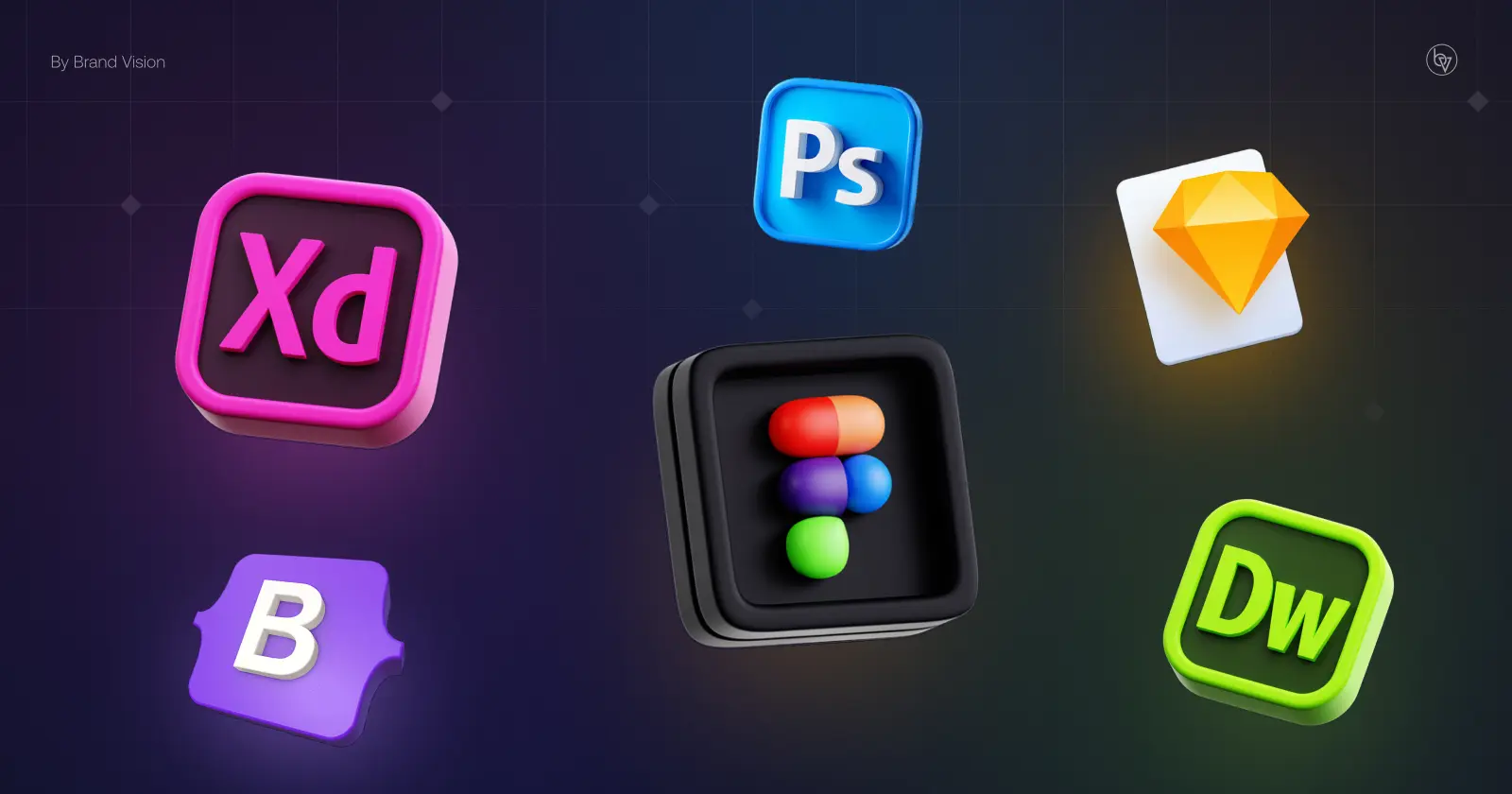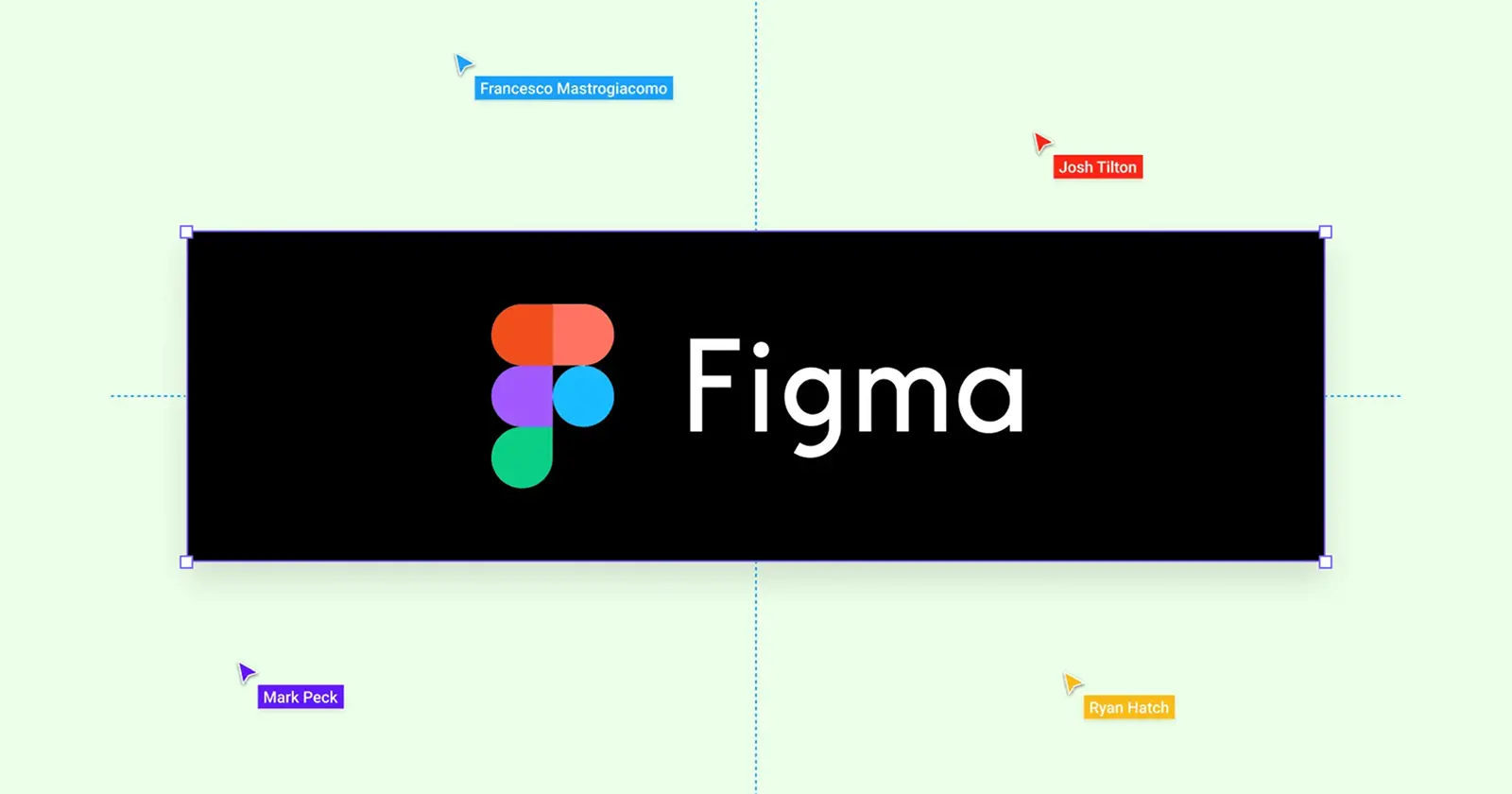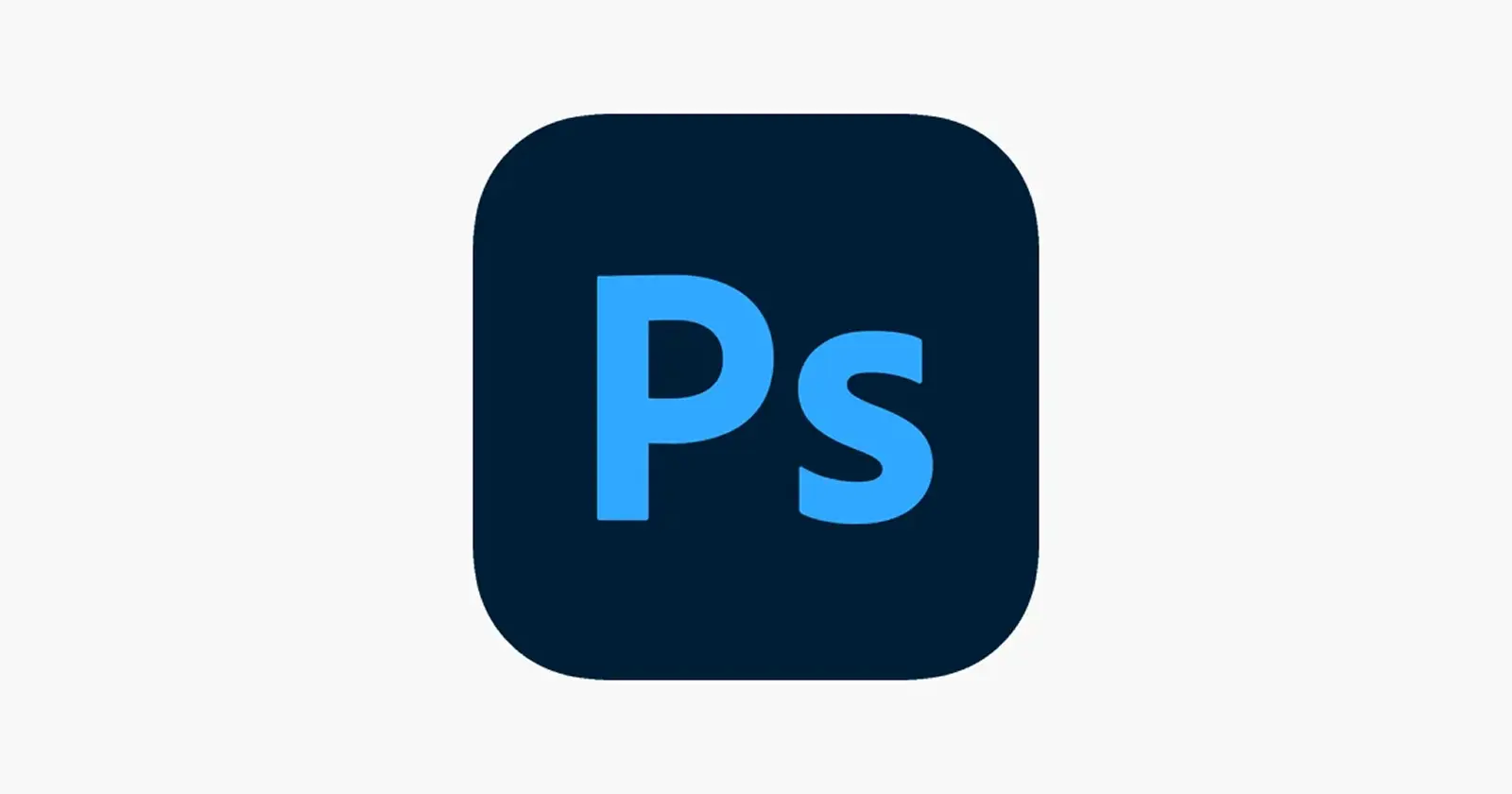The Top 6 Most Useful Tools & Apps For Web Design
Updated on
Published on


Web design has evolved significantly in recent years, thanks to a plethora of powerful tools and applications that cater to the ever-growing demands of designers and developers. In this article, we'll delve into the top six most useful tools for web design, each offering unique features and functionalities to streamline the design and development process. The tools in focus are Adobe Dreamweaver, Figma, Adobe XD, Photoshop, Bootstrap, and Sketch.
In remote web designing, leveraging various apps is crucial for maintaining effective communication, collaboration, and project management. These tools facilitate seamless coordination among team members dispersed in different locations, ensuring a smooth workflow and successful project outcomes in the realm of remote jobs. From collaborative design platforms to project management apps, the right tools enhance efficiency and contribute to the overall success of remote web design projects.
1. Adobe Dreamweaver:
Adobe Dreamweaver is an all-in-one solution for web design and development. Its WYSIWYG (What You See Is What You Get) editor allows designers to create visually appealing layouts, while the robust code editor caters to developers who prefer working with code directly. The Live View feature provides a real-time preview of the website, ensuring that designers and developers can make adjustments on the fly.
Pros:
- Integrated Development Environment (IDE): Adobe Dreamweaver is an integrated solution that combines a robust code editor with a visual design interface, catering to both developers and designers.
- Live Preview: The live preview feature allows users to see the changes in real-time as they code, facilitating quick iterations and adjustments.
- Multi-language Support: Dreamweaver supports a variety of programming languages, making it versatile for web development projects.
- Seamless Integration with Adobe Creative Cloud: It seamlessly integrates with other Adobe applications, like Photoshop and Illustrator, allowing for a smooth workflow.
Cons:
- Learning Curve: While powerful, Dreamweaver has a steeper learning curve, especially for beginners who might find its extensive feature set overwhelming.
- Price Tag: Adobe Dreamweaver is a part of the Adobe Creative Cloud subscription, which might be a significant expense for individual freelancers or small businesses.
2. Figma:

Figma is a versatile design tool that focuses on collaboration and prototyping. Designers can create and share designs in real-time, making it an ideal choice for teams working remotely. Its intuitive interface and design system support ensure a consistent and efficient design process.
Pros:
- Collaboration: Figma is a cloud-based design tool that excels in collaboration. Multiple team members can work on a project simultaneously, fostering real-time collaboration. Users can leave live comments for viewing and editing purposes.
- Cross-platform Compatibility: Figma is accessible through web browsers on both Windows and Mac, eliminating compatibility issues and ensuring a seamless experience across different operating systems.
- Prototyping: The prototyping feature allows designers to create interactive prototypes, making it easier to visualize and test the user experience.
- Design System Support: Figma supports design systems, enabling designers to maintain consistency across different elements of a project.
Cons:
- Learning Curve for Advanced Features: While Figma is user-friendly, mastering advanced features might take some time for new users.
- Limited Offline Access: Figma relies on internet connectivity, which could be a limitation for users in areas with unreliable internet access.
3. Adobe XD:
Adobe XD is a user-friendly tool specifically designed for UI/UX designers. Its focus on ease of use and interactive prototyping makes it an excellent choice for creating and testing user interfaces. The integration with Adobe Creative Cloud ensures a smooth workflow for designers using other Adobe applications.
Pros:
- Easy to Learn: Adobe XD boasts an intuitive interface, making it easy for beginners to learn and use.
- Interactive Prototyping: Similar to Figma, Adobe XD supports interactive prototyping, allowing designers to create realistic and dynamic user experiences.
- Integration with Adobe Creative Cloud: Adobe XD seamlessly integrates with other Adobe applications, enhancing the overall design workflow.
- Voice Prototyping: Unique to Adobe XD is the ability to prototype voice interactions, catering to the growing trend of voice-activated interfaces.
Cons:
- Limited Animation Features: While Adobe XD supports basic animations, it may not be as robust in terms of animation capabilities compared to other specialized tools.
- Less Feature-Rich for UI Design: Some designers find that Adobe XD lacks certain features found in other UI-focused tools.
4. Adobe Photoshop:

Adobe Photoshop is a powerhouse for image editing and graphic design. While not a dedicated web design tool, many designers use Photoshop for creating web graphics, layouts, and mockups. Its extensive feature set and industry-standard status make it an essential tool for many designers.
Pros:
- Industry Standard: Photoshop is a staple in the design industry, and its widespread use ensures compatibility and familiarity among designers and developers.
- Extensive Feature Set: Photoshop offers a vast array of tools for image editing, manipulation, and design, making it a versatile solution for various design needs.
- Layered Editing: The use of layers allows for non-destructive editing, enabling designers to make changes without affecting the entire image.
Cons:
- Not Built for Web Design: While Photoshop is excellent for image editing, it is not specifically tailored for web design, and its interface can be overwhelming for beginners.
- No Prototyping Features: Photoshop lacks built-in prototyping features, which may be a limitation for designers working on interactive web projects.
5. Bootstrap:

Bootstrap is a widely used front-end framework that simplifies the process of designing and developing responsive websites. It provides a grid system, pre-designed components, and a plethora of CSS and JavaScript options, allowing designers and developers to create visually appealing and functional websites quickly.
Pros:
- Responsive Design: Bootstrap is a front-end framework that prioritizes responsive design, ensuring that websites look and function well on various devices.
- Consistency: Bootstrap provides a consistent set of styles and components, making it easy for designers and developers to create cohesive and visually appealing interfaces.
- Open Source: Being open-source, Bootstrap is freely available, making it a cost-effective solution for web development projects.
- Community Support: The large Bootstrap community ensures ample documentation, tutorials, and support for users.
Cons:
- Customization Challenges: While Bootstrap offers a solid foundation, extensive customization might be challenging for developers who need highly unique designs.
- Dependency on jQuery: Bootstrap relies on jQuery for certain functionalities, which may not align with the trend of modern JavaScript frameworks.
6. Sketch:
Sketch is a popular choice among designers for its focus on vector-based design and interface elements. It is particularly well-suited for creating user interfaces and is widely used for designing websites and mobile apps. The artboard-based design approach and extensive library features contribute to a streamlined and efficient design process.
Pros:
- Vector-based Design: Sketch is a vector-based design tool, enabling designers to create scalable and high-resolution graphics.
- Plugins and Integration: Sketch supports a wide range of plugins, expanding its functionality and allowing for integration with other tools and services.
- Artboard-based Design: The artboard-based design approach in Sketch streamlines the process of creating multiple layouts for different devices and screen sizes.
- Library and Symbols: Sketch offers a robust system for creating and managing design elements through libraries and symbols, promoting consistency in design.
Cons:
- Mac-Only: Sketch is exclusive to Mac users, limiting its accessibility for designers who work on other operating systems.
- Learning Curve for Advanced Features: Similar to Figma, mastering advanced features in Sketch might take some time for new users.
In the dynamic field of web design, choosing the right tools is crucial for efficiency, collaboration, and the overall success of a project. Each of the six tools discussed—Adobe Dreamweaver, Figma, Adobe XD, Photoshop, Bootstrap, and Sketch—offers unique features and functionalities catering to different aspects of the web design and development process. Whether you're a solo designer, part of a collaborative team, or a developer aiming for responsive and visually appealing websites, these tools provide the necessary support to bring your web design projects to life. Ultimately, the choice of tool depends on your specific needs, preferences, and the nature of the project at hand. And if you don't know how to use one tool, Lumify Work PH says there's no need to worry because online courses are easily accessible wherever you are in the world.







